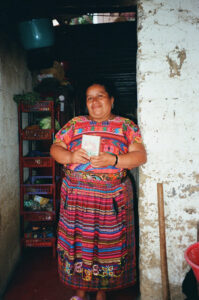
Empowering Kenyan Artisans with Safety and Opportunity
Safety and Opportunity for Kenyan Artisans This July, Unite to Light partnered with SAWA SAWA, an organization dedicated to empowering

Updated: April 2025
Between 2015 and 2024, the U.S. experienced 190 billion-dollar disasters, resulting in over 6,300 deaths and about $1.4 trillion in damages. Given these trends, reported by NOAA’s National Centers for Environmental Information (NCEI), it’s clear that such disasters aren’t going anywhere. When a disaster strikes, it’s too late to think about what you should have packed to weather the storm, and before disaster strikes, it can be daunting to know what to include. All-inclusive kits are expensive and don’t necessarily include items specific to you and your family. Since everyone is at risk, we should all have a plan.
Prepare for any emergency by building a disaster kit with items you likely already have at home. Here’s a quick guide to get you started, along with resources for further planning.
Water
Food
First Aid
In an emergency, injuries may occur. A well-stocked First Aid kit can prevent minor injuries from becoming major issues. You may want to take a basic first aid class though the Red Cross or online through the National Safety Council.
Basic First Aid Items in Your Kit:
Sanitation
Adequate sanitation is a significant environmental concern after a disaster. When sewer pipes are damaged or the sanitation system goes off-line, entire communities, including people and habitats are at risk. Be prepared to take care of your waste for the same period of time as you’ve prepared food and water. A basic sanitation kit should include:
Tools & Supplies
What you need can vary greatly based on where you live, the type of disaster you expect and your family unit. Talk with your family about items they wouldn’t want to be without in an emergency. Here are some basic items that most people will need in a disaster:
Documents
In preparation, scan valuable documents and store them securely online so they can’t be ruined by a disaster. It may be helpful to have copies of key items (like insurance cards, social security number, passwords and insurance policies) in your kit as well. Take short videos to catalogue valuables in your home, such as vehicles, computers, furniture and artwork, for insurance purposes. Key documents include:
Finally, being disaster-ready requires additional accommodations for older adults. Visit the National Council on Aging‘s website for more resources for older adults.
Sources: Ready America, California Department of Public Health, American Red Cross, Make a Plan Prepare for any emergency by building a disaster kit with items you likely already have at home. Here’s a quick guide to get you started, along with resources for further planning.

Safety and Opportunity for Kenyan Artisans This July, Unite to Light partnered with SAWA SAWA, an organization dedicated to empowering
Lighting the Path: How Unite to Light Supports the UN Sustainable Development Goals At Unite to Light, our mission is

Brighter Futures in Guatemala: Light, Water, and Community Empowerment When we stepped into Gloria Tuyuc’s home in San Juan Comalapa,